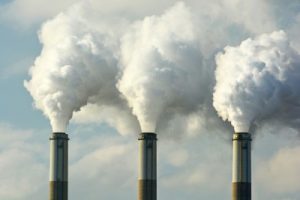In its latest regulatory action under Clean Air Act (CAA) Section 112, the EPA has proposed several minor regulatory changes affecting the seven facilities engaged in Wet-Formed Fiberglass Mat Production. Emissions limits, primarily for formaldehyde, for this sector were promulgated in 2002 and would be unaffected by the proposal. Formaldehyde is classified as a known, probable, or possible carcinogen.

Cost Considered in Environmental Review
Under Section 112, the EPA issues National Emissions Standards for Hazardous Air Pollutants (NESHAPs) for many industrial source categories based on the level of hazardous air pollutant (HAP) emissions achieved by the best performing sources in each category.
In addition, Section 112 requires two follow-up actions once a NESHAP is promulgated. First, the EPA must evaluate the health and environmental risks from sources within 8 years after a NESHAP is established. The CAA requires that the Agency set additional, risk-based standards if more emissions reductions are necessary “to provide an ample margin of safety to protect public health” or, “to prevent, taking into account costs and other relevant factors, an adverse environmental effect.”
Second, every 8 years, the EPA must evaluate whether there have been developments in technologies or other air toxic emissions reduction approaches since issuance of the initial NESHAP. This analysis includes, but is not limited to, evaluating whether technologies available at the time of the initial maximum achievable control technology (MACT) have changed to more efficient, cost-effective methods warranting tighter standards.
These two types of reviews are typically performed in concert and are collectively called residual risk and technology reviews (RTRs).
Minimum Destruction Efficiency
Wet-formed fiberglass mat is used as a substrate for multiple roofing products; as reinforcement for various plastic, cement, and gypsum products; and in miscellaneous specialty products. The fiberglass mat is made of glass fibers that have been bonded with a formaldehyde-based resin. Methanol is also present in some, but not all, resins used to produce wet-formed fiberglass mat.
Under the NESHAP, the affected source is each wet-formed fiberglass mat drying and curing oven. The emissions limits set in the 2002 NESHAP for the exhaust from ovens are (1) a maximum formaldehyde emissions rate of 0.03 kilograms per megagram (kg/Mg) of wet-formed fiberglass mat produced (0.05 pounds per ton (lb/ton) of wet-formed fiberglass mat produced) or (2) a minimum of 96 percent destruction efficiency of formaldehyde.
Risks Acceptable, Technologies Not Feasible
Based on its residual risk review, the Agency estimated that HAP emissions from the source category would result in no person experiencing a cancer risk above 1 in 1 million from HAPs emitted from the facilities. Under Section 112, a cancer risk no higher than 100 in 1 million is considered acceptable. The risks of noncancer illness posed by HAP emissions from the regulated facilities are similarly low, the EPA determined.
The Agency also considered control technologies and processes—carbon absorbers, biofilters, thermal oxidizers, and low-HAP or no-HAP binder formulations. The Agency said it found that these technologies/processes were either technically infeasible or not broadly available for the various types of wet-formed fiberglass produced.
Proposed Amendments
Accordingly, based on the RTR for the source sector, the EPA has proposed no changes to the 2002 NESHAP. Apart from the RTR, the Agency is proposing the following amendments:
- Revise requirements for periods of startup, shutdown and malfunction (SSM) to be consistent with NRDC v. EPA (DC Cir. 2008) and other court decisions.
- Require electronic reporting of performance test results.
- Reduce the frequency of compliance reports to a semiannual basis in all instances.
- Reduce parameter monitoring and recording requirements during periods when the binder formulation being applied to glass fibers to form mat does not contain any HAPs. The Agency expects that this proposed amendment will reduce the burden for regulated facilities “while continuing to protect public health and the environment.”
The proposal was published in the April 6, 2018, Federal Register (FR).
